About the Artists
The winners of the "Reduce, Re-Use, Recycle" Public Art Student Competition are Alanoud Al-Ghamdi, Johaina Al Ahmad and Nada Elkharashi.
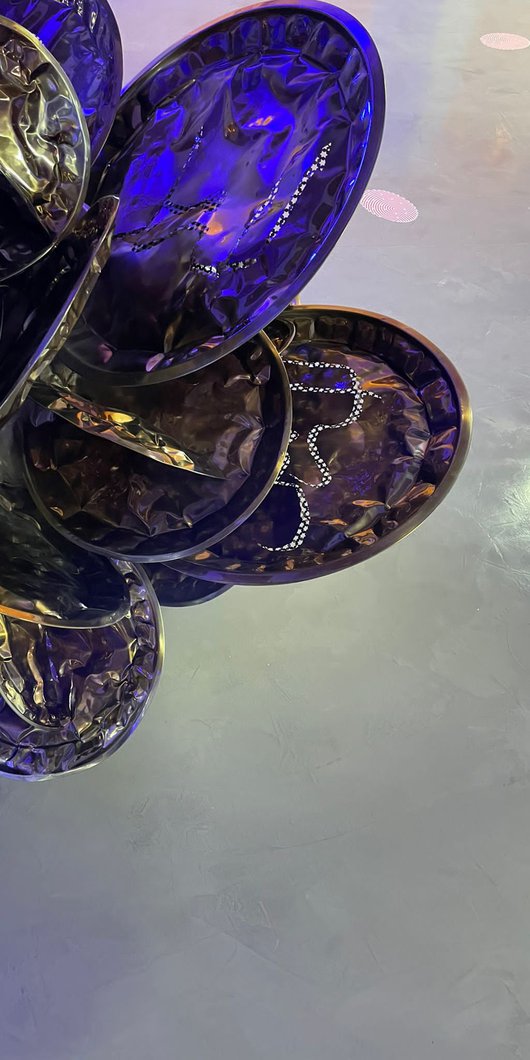
19 April 2022
By Hissa Al Hitmi
Our Public Art team recently hosted a competition inviting students to create new artworks using recycled materials, in honour of Qatar Museums' commitment to sustainability. After a rigorous review process, three artists have been selected to display their works at M7, in the heart of Msheireb Downtown Doha.
The winners of the "Reduce, Re-Use, Recycle" Public Art Student Competition are Alanoud Al-Ghamdi, Johaina Al Ahmad and Nada Elkharashi.
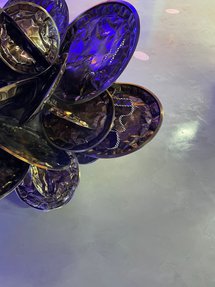
Alanoud Al-Ghamdi, Desert Rose, 2022, Recycled stainless steel; 165 x 105 cm © Qatar Museums 2022
Alanoud Al-Ghamdi is a Qatari artist and calligrapher who delivers creative, thought-provoking messages that reflect the world we live in today.
As a commentary on carbon emissions, water pollution and the effects of climate change, Al-Ghamdi repurposes metal scraps to showcase how materials can be recycled to create a unique artwork. Desert Rose embodies Qatar’s famous crystal formation, incorporating Arabic calligraphy to add a unique element that invites audiences to connect with the Qatari national treasure.
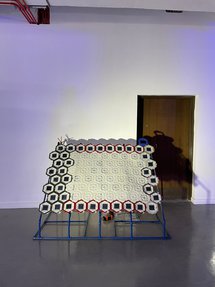
Johaina Al Ahmad, 3R (Reduce, Re-use, Recycle) - No Waste Policy; Smart Wall, 2022, Polymer waste, carbon black, 187 x 150 cm © Qatar Museums 2022
An undergraduate student at Qatar University majoring in Environmental Science, Johaina Al Ahmad is currently working as a part-time student employee at Qatar University’s Center for Advanced Materials with a specialisation on smart nano-solutions. She is particularly interested in environmental remediation and protection using nanotechnologies.
Al Ahmad's smart wall is based on recycling plastics facilitated through the extrusion of polymer waste and carbon black. She used the synthesised conducting composites from waste carbon black particles and plastics as base materials to design conductive tiles.
In this smart wall, Al Ahmad also painted tiles with conductive material made from waste carbon black from Qatar Aluminum Company. Solar panels are embedded in the tiles to utilise renewable energy which can be used to recharge phones and other electronic devices. As an added feature, the smart wall can also incorporate sensors to display the humidity and temperature.
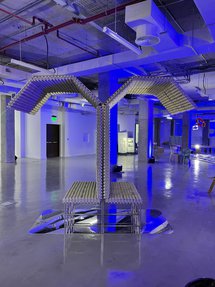
Nada Elkharashi, Eggo, 2022, Recycled egg crates, 330 x 210 x 130 cm © Qatar Museums 2022
Nada Elkharashi is an interdisciplinary designer-researcher focused on creating thought-provoking experiences and realities. Her work lies at the intersection of materiality, cultural philosophy and human ecology.
Eggo is a public canopy wall that adds value to the lifespan of single-use egg crates. Eggo transforms the basic egg tray into perforated screens by subtracting holes from the opposing protrusions. While allowing users to appreciate the shade, Eggo also serves as a tool to stimulate our emotional sympathetic system into action—to start seeing and feeling what we do not typically see and feel with the disposable matter.
The use of egg crates in this foreign setting triggers viewers to be more attentive to adapt and shift their behavior to respect the life of a nonliving organism.
Hissa al Hitmi is a Digital Editorial Coordinator at Qatar Museums.
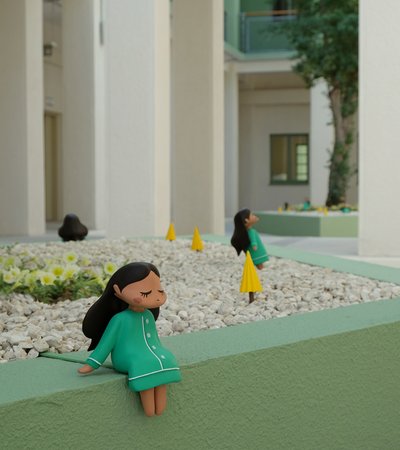
2022 Student Initiative: Meet the Artists
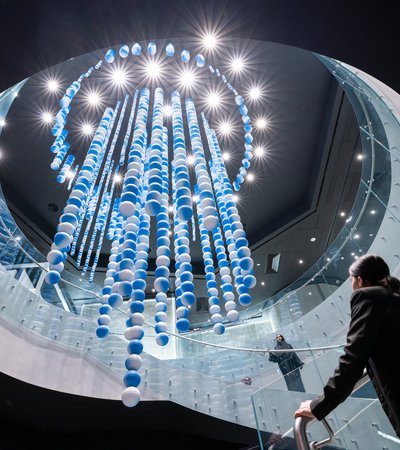
Public Art
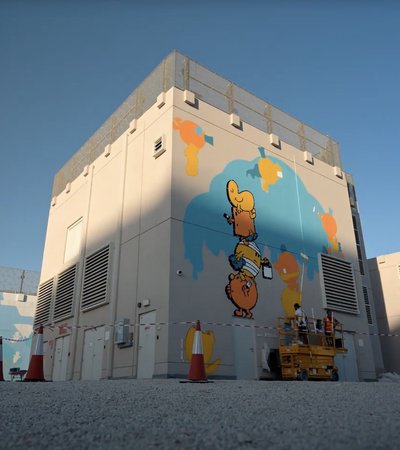
Story
Taking Art to the Streets: POW! WOW! Doha 2021
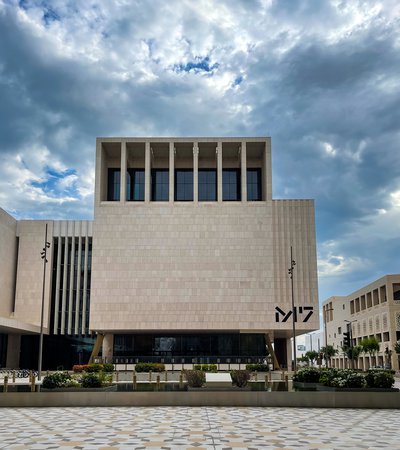
Story
M7: Qatar's New Creative Hub